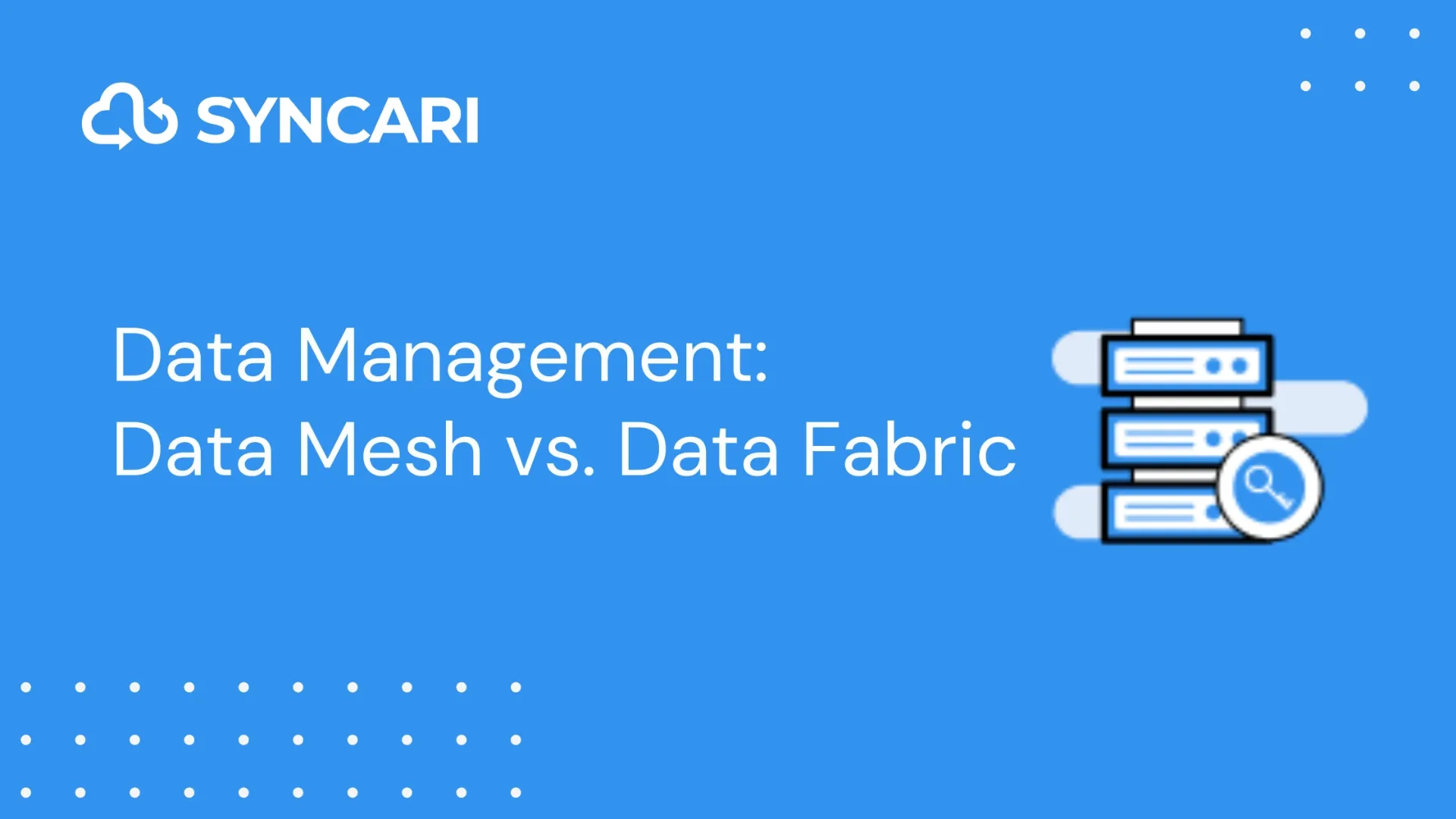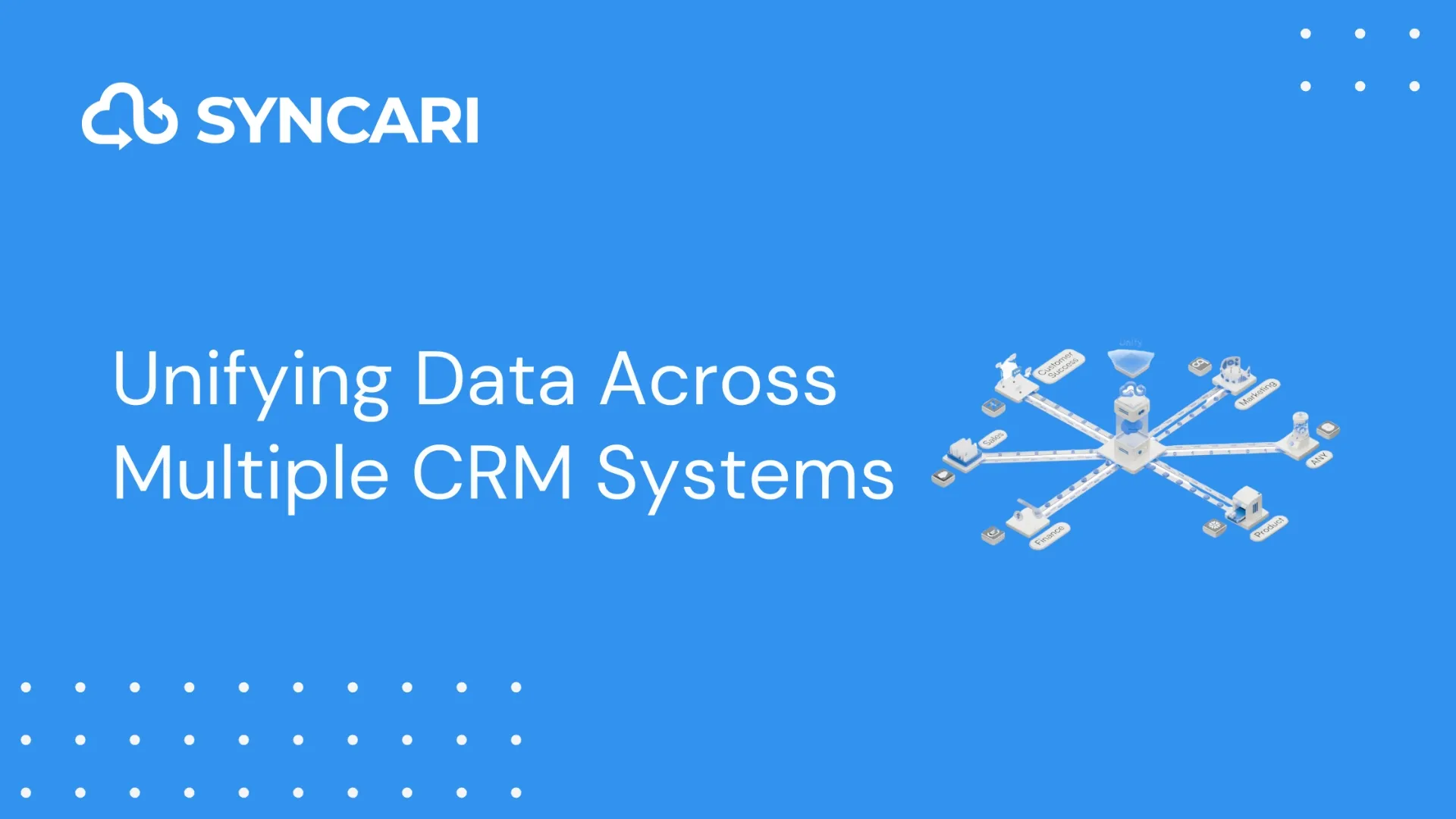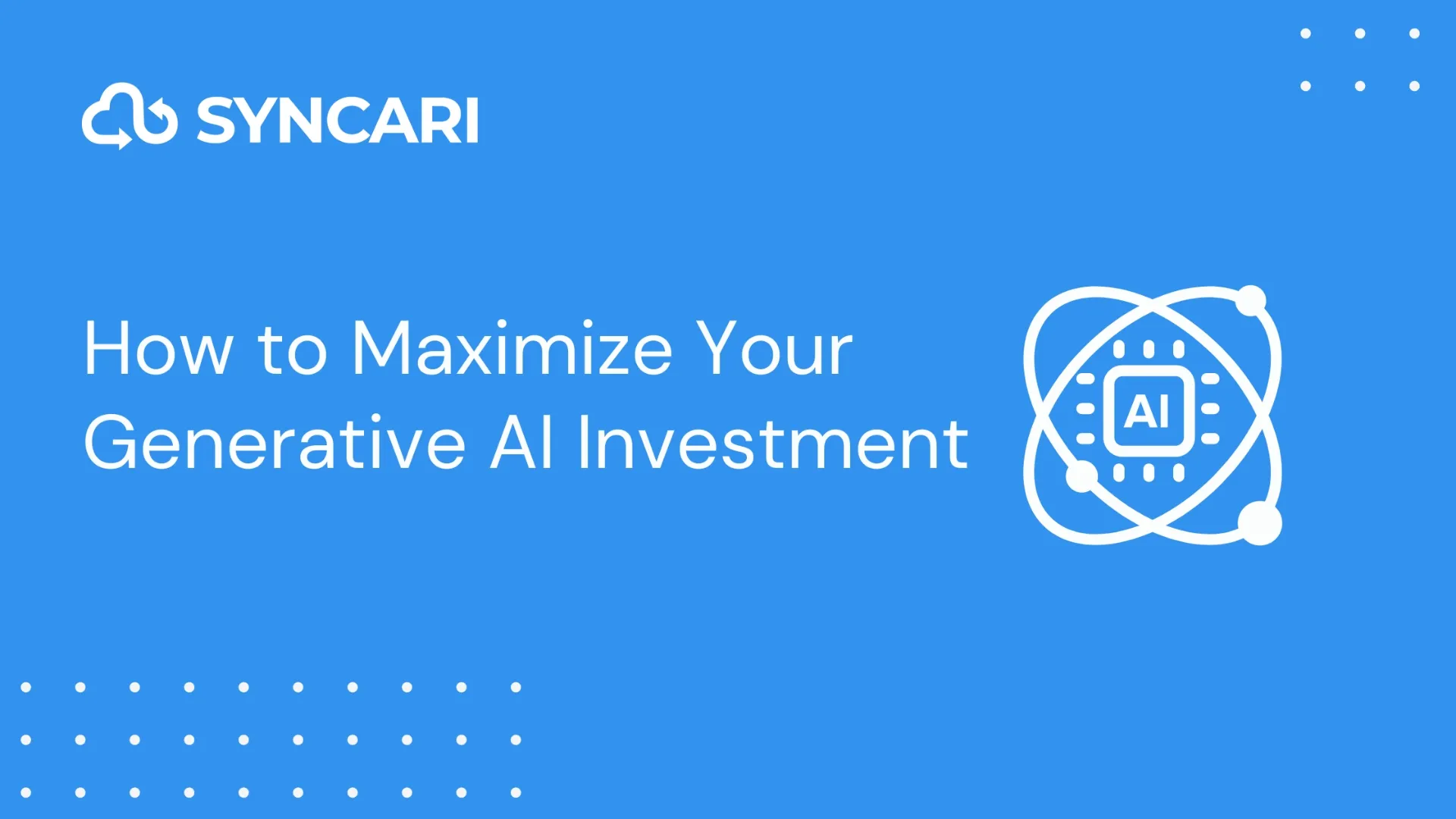When you’re in sales or marketing and faced by relentless data glitches, it can be overwhelming. No one at the top cares enough about data quality in the CRM.
If you’re reading this, and you’re an ops pro, you may be the person demanding action. Or you may be tired of trying. We’ve met a lot of people in go-to-market teams and their ops counterparts who have exhausted all possible avenues to get the resources needed to clean things up.
If you’re reading this, and you’re a seller or marketer, you may be trying to figure out how to navigate a web of stakeholders, decision-makers, and influencers. They all have their own projects, personalities, some may have a budget, some don’t.
Below is a robust approach to winning people over to your CRM data cleansing project – or any data cleansing project.
Before you begin pushing for clean CRM data:
Sit with the problem. What exactly is happening? You need to define the impact on the business of these data issues, and help leadership understand when an issue is due to data problems or process problems or otherwise. You might not know the code involved, or even all the tools. But why are you frustrated with the data in its current state? Here are some questions to ask:

- Are you losing deals because data handoffs are sloppy?
- Are you having to spend a ton of time on manual work?
- Are you hurting your domain when you email bad emails?
- Are you trying to help customers in a support or success capacity, but can’t see the right information about them?
- Is your sales team complaining about duplicate opportunities, accounts and contacts?
- Are reps complaining about how difficult it is to uncover opportunities and the right information in your single source of truth?
- Have you pivoted in your go-to-market and your old way of handling data doesn’t cut it?
Or, worse, are you sending Slack messages all the time just to get basic information? It’s a dark time we live in.
Ok, now you’re ready to build your business case for CRM data cleansing.
CRM Data Cleansing: How to Prove it’s Mission-Critical
1. Quantify the hard costs (tools, contractors) the data cleansing project will eliminate
CRM systems often struggle to function properly when plagued by data gaps and inaccuracies. To keep things running smoothly, businesses often rely on contract workers, part-time employees, or entry-level admins to do the grunt work – manually enter and clean up data.

However, imagine the possibilities if your CRM and its associated tools maintained accurate and complete data. The time and resources that could be saved for more valuable tasks would be significant. It’s also worth considering if there are tools available to automate the data cleanup process.
To highlight the importance of data cleansing, it’s essential to quantify the expenses that can be eliminated by implementing such practices. This involves calculating the costs associated with manual data entry and cleanup performed by contract workers, part-time employees, or entry-level admins.
Additionally, exploring the potential benefits of having better data quality within the CRM and related tools can provide insights into the possible time and resource savings. It’s also worth investigating the feasibility of adopting automated data cleanup tools to streamline processes and reduce manual efforts.
2. Quantify the soft costs of messy CRM data
The presence of inaccurate data and duplicates in your CRM can have a significant impact on your business, resulting in considerable time and resource expenditure. At the best of times, your operations personnel have to devote several hours every week to running and validating deduplication scripts or meticulously checking Salesforce reports for any missing fields.

However, in more unfortunate scenarios, which tend to occur quite frequently, the existence of duplicate leads leads to sales representatives inadvertently reaching out to the same contacts or struggling to determine which record holds the accurate information. This not only results in a waste of time but also adds to the burden of manual data entry and cleanup.
As a consequence, campaigns may experience delays in their launch, and the overall efficiency of your sales representatives may be compromised. In fact, the frustration of dealing with such issues can even contribute to sales representative churn, as they find themselves investing valuable “Revenue Generating Time” into the tiresome task of sifting through an array of data rabbit holes in search of actionable and reliable information.
It is crucial to address these challenges posed by inaccurate data and duplicates in your CRM, as they incur significant costs to your business in terms of time, resources, campaign efficiency, and sales team productivity. Taking proactive measures to ensure the accuracy and cleanliness of your CRM data will not only alleviate these burdens but also empower your team to focus on revenue-generating activities and achieve better outcomes.
3. Map to emotional signals to users of the solution, as well as any buyers, decision-makers and decision influencers
When addressing the importance of data cleansing, it’s essential to consider the emotional signals experienced by CRM users and key decision-makers. Messy CRM data can evoke a range of negative emotions and have a significant impact on user satisfaction, team dynamics, and organizational performance. Let’s delve deeper into these emotional signals and their potential consequences:

- Frustration: Users who rely on accurate data to carry out their daily tasks can become frustrated when confronted with messy CRM data. Incomplete or incorrect information can impede their ability to perform efficiently, causing delays, errors, and a sense of dissatisfaction. This frustration can lower morale and hinder productivity, as users spend valuable time trying to navigate through inaccurate data or rectify inconsistencies.
- Confusion: Inaccurate or duplicated data in the CRM can lead to confusion among users. They may struggle to determine which data entry is correct or face difficulties in identifying the most up-to-date information. This confusion can result in missed opportunities, miscommunication, and even strained relationships with clients or prospects.
- Decreased efficiency: Messy CRM data hampers the efficiency of users, as they are forced to spend additional time and effort searching for accurate and usable data. Instead of focusing on their core responsibilities, they find themselves caught in a cycle of data verification, corrections, and manual workarounds. This decreases their overall efficiency, impacts their ability to meet deadlines, and reduces their capacity to generate revenue.
- Concerns about reliability: Decision-makers and influencers who rely on CRM data for strategic decision-making may experience concerns about the reliability and accuracy of reports and analytics derived from flawed data. Doubts about the integrity of data-driven insights can lead to hesitations in making critical business decisions, potentially stalling progress and hindering growth.
By illustrating these emotional signals and their potential impact, stakeholders can better grasp the far-reaching consequences of messy CRM data. It highlights the need for data cleansing practices to alleviate frustration, enhance user satisfaction, improve team dynamics, and ensure reliable insights for informed decision-making. By addressing the emotional aspects of data quality, organizations can foster a more positive and productive work environment while driving better results.
4. Identify a solution pathway
To successfully implement data cleansing practices, it’s crucial to present a clear solution pathway that outlines the necessary steps. This will help stakeholders understand the practical aspects of the initiative and provide them with a roadmap for achieving data cleanliness and integrity. Here are some key steps to include:
- Evaluate available data cleansing tools: Begin by researching and evaluating different data cleansing tools in the market. Assess their features, capabilities, ease of use, and compatibility with your CRM system. Consider factors such as deduplication, data validation, data enrichment, and data standardization. By selecting the right tool, you can streamline the data cleansing process and ensure its effectiveness.
- Establish data quality standards: Define the standards and criteria for data quality that your organization aims to achieve. This may include guidelines for accurate data entry, formatting conventions, and validation rules. Clearly communicate these standards to all stakeholders and emphasize their importance in maintaining a high level of data integrity.
- Implement automated data validation processes: Integrate automated data validation processes into your CRM system to prevent the entry of inaccurate or incomplete data. This can include real-time validation checks during data entry, ensuring that only valid and properly formatted data is accepted. Explore validation rules, regular expression patterns, and algorithms that can flag and correct errors or inconsistencies in the data.
- Provide examples of successful initiatives: Showcase examples of successful data cleansing initiatives from other organizations as inspiration. Highlight their achievements in terms of improved data quality, enhanced operational efficiency, and better decision-making. These success stories serve as tangible evidence of the potential benefits that can be achieved through effective data cleansing.

By presenting a clear solution pathway that encompasses evaluating tools, establishing data quality standards, implementing automated data validation processes, and providing real-world examples, you can demonstrate to stakeholders the practical steps needed to achieve data cleanliness. This not only helps stakeholders visualize the implementation process but also instills confidence in the potential positive outcomes of the data cleansing initiative.
5. Brand it fun – no joke
When presenting the data cleansing project to stakeholders, it’s essential to capture their attention and make a lasting impression. One effective way to achieve this is by branding the project with a fun and catchy name. By infusing creativity into the presentation, you can ignite stakeholders’ interest and help them remember the significance and potential impact of the initiative.
Think outside the box and let your imagination run wild. Consider catchy names like “Project Windex” or “The Juice Cleanse” to add a playful and memorable touch to the data cleansing endeavor. These unique names not only convey the essence of the project but also create a sense of excitement and intrigue among stakeholders.

Branding the project with a fun name goes beyond a mere label—it creates a distinct identity that resonates with stakeholders. The name becomes a conversation starter and helps establish a positive and engaging atmosphere during discussions. It encourages stakeholders to view the data cleansing initiative as an exciting and worthwhile undertaking.
Furthermore, the power of a catchy name extends beyond the initial presentation. Stakeholders are more likely to recall and reference the project using its unique and memorable name. This helps keep the project at the forefront of their minds, increasing their commitment and support as it progresses.
Remember, a little creativity goes a long way. By branding the data cleansing project with a fun and catchy name, you can add an extra layer of appeal to your presentation and leave a lasting impression on stakeholders, ensuring they fully grasp the importance and potential benefits of the initiative.
6. Create a one page business case
Crafting a concise one-page business case for data cleansing is crucial to capture stakeholders’ attention and convey the mission-critical nature of the initiative. This summary should effectively communicate the financial and operational benefits, as well as the emotional impact on users and decision-makers. Here’s a breakdown of this process:

- Compelling headline or tagline: Begin with a headline or tagline that succinctly captures the essence of the business case and emphasizes the importance of data cleansing. For example, “Unlocking Success: The Mission-Critical Power of Data Cleansing” or “Data Cleansing: Your Path to Efficiency and Empowerment.”
- Financial benefits: Clearly outline the financial advantages of data cleansing. Highlight the potential cost savings by quantifying the elimination of expenses related to manual data entry, cleanup, and additional administrative resources. Showcase the return on investment (ROI) that can be achieved through improved data accuracy, operational efficiency, and reduced errors.
- Operational benefits: Summarize the operational benefits that data cleansing brings. Emphasize how accurate and reliable data improves productivity, streamlines workflows, and reduces time wasted on searching for or correcting data errors. Illustrate how data cleansing enhances campaign launches, improves customer insights, and strengthens decision-making processes.
- Emotional impact on users: Communicate the emotional impact that messy CRM data has on users. Describe the frustration, confusion, and decreased efficiency experienced by users when relying on flawed data. Connect these emotional signals to their impact on user satisfaction, team dynamics, and overall performance. This highlights the importance of data cleansing in creating a positive work environment and empowering users.
- Emotional impact on decision-makers: Extend the discussion to the emotional impact on decision-makers. Highlight their concerns about the reliability and accuracy of reports and analytics derived from flawed data. Convey how data cleansing instills confidence in data-driven insights, enabling more informed and strategic decision-making. Showcase how data quality positively influences organizational performance and growth.
By developing a concise one-page business case that captures the financial and operational benefits, as well as the emotional impact on users and decision-makers, stakeholders can quickly understand the compelling rationale for data cleansing. This summary serves as a powerful tool to gain support, alignment, and investment in this critical initiative.
7. Float it with key stakeholders at peer level
To ensure the success of your data cleansing initiative, it’s crucial to engage key stakeholders at a peer level. This involves sharing the one-page business case you’ve developed and actively seeking their input and feedback. By involving stakeholders in discussions and addressing their concerns or questions, you can build support and consensus for the data cleansing initiative. Here’s what the process can look like:
- Share the one-page business case: Distribute the one-page business case document to key stakeholders who hold positions at a peer level within the organization. This includes individuals from various departments, such as operations, sales, marketing, and IT. Ensure that the document is concise, visually appealing, and easy to understand, capturing the key points and benefits of data cleansing.
- Socialize it: Initiate discussions with the stakeholders to present and discuss the business case. Encourage an open and collaborative environment where stakeholders can freely express their thoughts, concerns, and questions. Actively listen to their feedback and address any uncertainties or objections they may have regarding the initiative.

- Gather feedback: Take note of the feedback received from stakeholders during the discussions. Listen attentively to their perspectives, insights, and suggestions. Use this feedback to refine and enhance the data cleansing proposal. This collaborative approach helps stakeholders feel heard and valued, increasing their sense of ownership and commitment to the initiative.
- Address concerns and questions: Pay careful attention to any concerns or questions raised by stakeholders. Take the time to provide thoughtful and comprehensive responses that address their specific points of contention. Clarify any misconceptions and provide additional information or evidence as needed to alleviate concerns and build confidence in the data cleansing initiative.
- Showcase potential benefits: During the discussions, emphasize the potential benefits of data cleansing and its alignment with organizational goals. Highlight how data cleansing can improve operational efficiency, enhance data accuracy, enable better decision-making, and drive overall business success. Illustrate these benefits using examples, case studies, or success stories from other organizations to further solidify the case.
- Build support and consensus: Through open discussions and addressing concerns, work towards building support and consensus among the key stakeholders. Seek to align their perspectives and gain their buy-in for the data cleansing initiative. Encourage stakeholders to actively contribute to the ongoing development and implementation of the initiative, fostering a sense of shared ownership and responsibility.
By floating the one-page business case with key stakeholders at a peer level, engaging in discussions, gathering feedback, and showcasing the potential benefits, you can build a strong foundation of support for the data cleansing initiative. This collaborative approach fosters alignment, encourages stakeholder involvement, and increases the likelihood of successful implementation and adoption of data cleansing practices throughout the organization.
8. Tee up a presentation for decision-makers and buyers
Based on the feedback received, refine the one-page business case and prepare a comprehensive presentation to be delivered to decision-makers and buyers. Address their specific pain points and concerns to increase the likelihood of gaining their approval and securing the necessary resources for implementation.

By following the outlined steps, you can effectively prove the mission-critical nature of CRM data cleansing. Demonstrating the quantifiable costs, both hard and soft, along with emotional signals and a clear solution pathway, will help garner support from stakeholders and pave the way for successful implementation.
How can Syncari Support Your Data Cleanse?
In the quest for clean and reliable data, Syncari stands as a powerful ally, offering a range of features designed to support data cleansing efforts. Let’s explore how Syncari can help transform messy data into a pristine and accurate asset.
How Syncari Supports Data Cleansing

Data Consolidation and Normalization
One of the fundamental challenges in data cleansing is dealing with disparate and fragmented data sources. Syncari simplifies this process by consolidating data from various systems, such as CRM, marketing automation, and ERP, into a centralized repository. This consolidation ensures that data is easily accessible, providing a comprehensive view of customer information.
Moreover, Syncari excels at data normalization. It standardizes data formats, resolves inconsistencies, and establishes uniform data structures across multiple systems. By normalizing data, Syncari ensures that information is consistently formatted and accurately represented, reducing the likelihood of errors and duplicates.
Deduplication and Record Merging
Duplicate records can plague a database, leading to confusion, inefficiencies, and skewed analytics. Syncari’s deduplication capabilities come to the rescue by identifying and merging duplicate records. Through advanced matching algorithms, Syncari intelligently identifies duplicate entries, taking into account variations in data formats and fields. This eliminates redundant records and ensures a single source of truth for each customer, account, or contact.
With record merging, Syncari seamlessly combines duplicate data, preserving the most relevant and accurate information while eliminating redundancy. This not only streamlines data management but also enhances data accuracy and integrity.
Data Enrichment and Validation
To augment existing data, Syncari offers powerful data enrichment capabilities. By leveraging third-party data sources and APIs, Syncari enhances customer profiles with additional attributes, such as demographic information, firmographics, and social media data. This enrichment enhances the quality and depth of customer insights, enabling more personalized and targeted marketing and sales efforts.
Furthermore, Syncari performs comprehensive data validation to ensure data accuracy and integrity. It applies data validation rules and algorithms to verify the correctness and completeness of data entries. By flagging and correcting errors or inconsistencies in real-time, Syncari minimizes the impact of flawed data on decision-making and operational efficiency.
Real-Time Data Synchronization
Data is constantly evolving, and maintaining real-time synchronization across systems is crucial for data integrity. Syncari excels in this aspect, offering seamless and automated data synchronization. With Syncari’s real-time sync capabilities, any updates or modifications made in one system are instantly reflected in all connected systems. This ensures that data remains consistent and up to date across the organization, eliminating data discrepancies and providing users with accurate and reliable information.
Syncari’s real-time data synchronization also supports data cleansing efforts by preventing the propagation of erroneous or duplicate data across systems. By instantly updating and synchronizing cleansed data, Syncari helps maintain the integrity and quality of information across the entire data ecosystem.

Syncari serves as a robust data automation platform that supports organizations in their data cleansing endeavors. From data consolidation and normalization to deduplication and record merging, data enrichment and validation, and real-time data synchronization, Syncari offers a comprehensive suite of features to ensure data accuracy, integrity, and reliability.
By leveraging Syncari, companies can embark on their data cleansing journey with confidence, transforming messy data into a valuable asset that drives informed decision-making and business success.
Benefits of Using Syncari for Data Cleansing
When it comes to data cleansing, the advantages of leveraging Syncari as your data automation platform are numerous. Let’s explore the key benefits that Syncari offers in helping you achieve cleaner and more reliable data.
Improved Data Accuracy and Integrity
By utilizing Syncari’s data cleansing capabilities, you can significantly enhance the accuracy and integrity of your data. Through consolidation, normalization, deduplication, and validation, Syncari ensures that your data is cleansed of inconsistencies, errors, and duplicates. This improvement in data quality translates to more reliable insights and better decision-making throughout your organization.
Enhanced Operational Efficiency and Productivity
Messy and unreliable data can hamper operational efficiency and productivity. Syncari streamlines the data cleansing process, automating tasks that were once time-consuming and error-prone. With Syncari’s advanced algorithms and real-time synchronization, you can reduce manual efforts spent on data entry, verification, and cleanup. This allows your teams to focus on high-value activities, driving operational efficiency and boosting productivity across the board.
Time and Cost Savings through Automated Data Cleansing
Data cleansing traditionally involved significant manual effort and resources, resulting in time and cost burdens for organizations. However, with Syncari’s automated data cleansing capabilities, you can save valuable time and resources. Syncari automates the identification and merging of duplicate records, data normalization, and validation processes. This automation not only speeds up the data cleansing process but also eliminates the need for manual interventions, reducing the associated costs.
Empowering Users with Reliable and Actionable Insights
Clean and accurate data empowers users with reliable and actionable insights. Syncari ensures that users have access to consistent and up-to-date data across systems, providing a single source of truth. With reliable data at their fingertips, users can make informed decisions, create targeted marketing campaigns, and engage with customers more effectively. By equipping your teams with reliable insights, Syncari empowers them to drive better outcomes and achieve business success.
Choosing Syncari as your data automation platform for data cleansing brings numerous benefits. From improved data accuracy and integrity to enhanced operational efficiency and productivity, the time and cost savings from automated data cleansing, and the empowerment of users with reliable and actionable insights, Syncari revolutionizes your data cleansing efforts. By harnessing the power of Syncari, you can unlock the full potential of your data, drive better decision-making, and propel your organization towards greater success in a data-driven world.
Conclusion
When faced with relentless data glitches across teams, the challenges can seem overwhelming. Whether you’re an ops pro demanding action or a seller or marketer trying to navigate a web of stakeholders, decision-makers, and influencers, the struggle is real. However, there is hope.

By following this robust approach to winning people over to your CRM data cleansing project, you can pave the way for success. Before diving into the project, sit with the problem and understand its impact on your operations. Are you losing deals due to data handoffs? Spending excessive time on manual work? Hurting your domain with bad emails? Struggling to access the right customer information? Addressing these pain points is crucial.
In this journey toward cleaner and more reliable data, Syncari stands as a powerful ally. With its data consolidation and normalization capabilities, deduplication and record merging features, data enrichment and validation functionalities, and real-time data synchronization, Syncari revolutionizes your data cleansing efforts. By leveraging Syncari, you can achieve improved data accuracy and integrity, enhanced operational efficiency and productivity, time and cost savings through automation, and empower your teams with reliable and actionable insights.
Choose Syncari as your data automation platform, and unlock the full potential of your data. Drive better decision-making, increase efficiency, and propel your organization toward greater success in today’s data-driven world. The road to clean data starts with Syncari.


